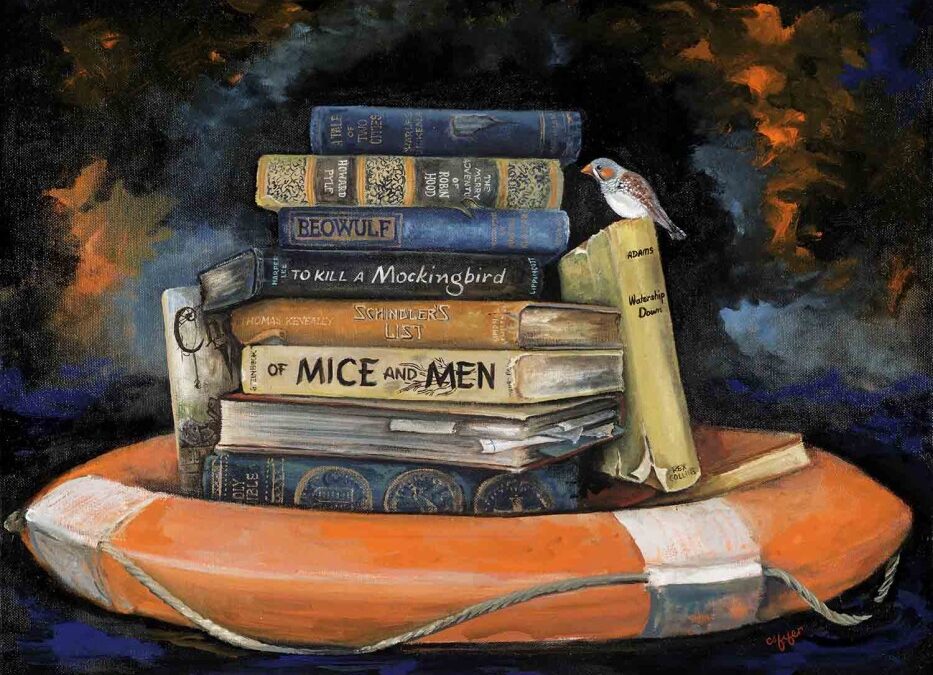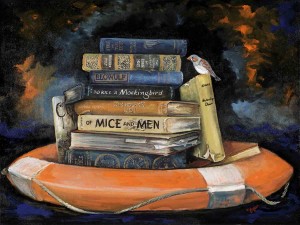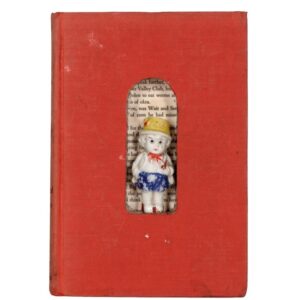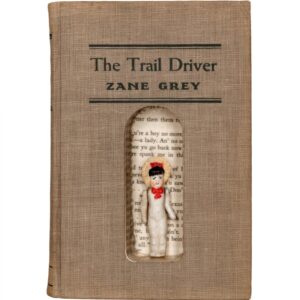Life Raft
In The Tale of Two Cities, Carton makes the ultimate sacrifice to save Darnay’s life by offering up his own in exchange at the foot of the gallows. Dickens offers Carton these last words : “ I see that child who lay upon her bosom and who bore my name, a man winning his way up in that path of life which once was mine. I see him winning it so well, that my name is made illustrious there by the light of his. I see the blots I threw upon it, faded away. I see him, fore-most of just judges and honoured men, bringing a boy of my name, with a forehead that I know and golden hair, to this place—then fair to look upon, with not a trace of this day’s disfigurement—and I hear him tell the child my story, with a tender and a faltering voice. It is a far, far better thing that I do, than I have ever done; it is a far, far better rest that I go to than I have ever known.” Oh, they owe this guy, BIG TIME. Incidentally, this is one of my favorite novels OF ALL TIME.
Robin Hood was a popular folk figure in the medieval times, but it was not until the Victorian era that the traditional tales were adapted for children. The Robin Hood legend has been subject to numerous shifts and mutations throughout its history. Robin himself has evolved from a yeoman bandit to a national hero of epic proportions, who not only supported the poor by taking from the rich, but heroically defends the throne of England itself from unworthy and venal claimants. The Merry Adventures of Robin Hood, by Howard Pyle is the version shown here.
Beowulf is the conventional title of an Old English epic poem set in Scandinavia, commonly cited as one of the most important works of Anglo-Saxon literature. It is the oldest surviving epic poem of Old English and also the earliest vernacular English literature.
The full poem survives in the manuscript known as the Nowell Codex, located in the British Library. In the poem, Beowulf, a hero of the Geats in Scandinavia, comes to the aid of Hroðgar, the king of the Danes, and saves the Danish peoples by slaying the dragon Grendel.
To Kill A Mockingbird, by Harper Lee, is renowned for its warmth and humor, despite dealing with the serious issues of rape and racial inequality. The narrator’s father, Atticus Finch, has served as a moral hero for many readers and as a model of integrity. In 2006, British librarians ranked the book ahead of the Bible as one “every adult should read before they die”.
Schindler’s Ark (released in America as Schindler’s List) was published in 1982 by Australian novelist Thomas Keneally. The book tells the story of Oskar Schindler, a Nazi Party member who turns into an unlikely hero by saving 1,200 Jews from concentration camps all over Poland and Germany.
Of Mice and Men is a novella written by John Steinbeck. Published in 1937, it tells the story of George Milton and Lennie Small, two displaced migrant ranch workers, during the Great Depression in California. Lennie accidently breaks a woman’s neck. When the other ranch hands find the corpse, George unhappily realizes that their version of the American dream is at an end. George hurries away to find Lennie, hoping he will be at the meeting place they designated at the start of the novella in case Lennie got into trouble. Knowing that there is only one thing he can do to save Lennie from the painful death that Curley’s lynch mob intends to deliver, he shoots his friend in the back of the head.
Charlotte’s Web is a children’s novel by American author E. B. White. The novel tells the story of a pig named Wilbur and his friendship with a barn spider named Charlotte. When Wilbur is in danger of being slaughtered by the farmer, Charlotte writes messages praising Wilbur (“Some Pig”) in her web in order to persuade the farmer to let him live. As his dearest friend, Charlotte comes to Wilbur’s aid many times and in several different ways. I love to read this book aloud to children/classes, but sadly, still cannot get through chapter 21 without crying. Out Loud. In front of everyone.
Watership Down is a classic adventure novel, written by English author Richard Adams, published in 1972. Set in south-central England, the story features a small group of anthropomorphized rabbits. Evoking epic themes, the novel is the Aeneid of the rabbits as they escape the destruction of their warren and seek a place to establish a new home, encountering perils and temptations along the way. Fiver, a young runt rabbit who is a seer, receives a frightening vision of his warren’s imminent destruction. When he and his brother Hazel fail to convince their chief rabbit of the need to evacuate, they set out on their own with a small band of rabbits to search for a new home. The travelling group of rabbits finds itself following the leadership of Hazel, previously an unimportant member of the warren. The two unlikely leaders face dangerous perils and dramatic rescues…and this incidentally, was one of my favorites as a kid.







